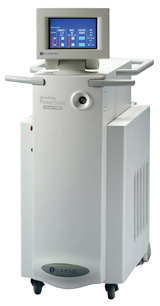Bladder, Kidney & Ureteral Stones
Each year, about one million people in the United States are diagnosed with bladder, kidney or ureteral stones. Stone disease is more common in Caucasians than in African-Americans, and more common in men than women. It typically strikes between age 20 and 50. Unfortunately, if you get one stone, you are more likely to get more. Stones can be as small as a grain of sand or as large as a golf ball. Repeated stone attacks can affect the function of your kidneys.
The kidneys make urine by removing extra water and waste from your blood. They also help your body balance certain chemicals in your blood. Two narrow muscular tubes, called ureters, drain urine from each kidney into the bladder, which temporarily stores urine. The urethra is the tube that empties urine from the bladder and out of the body.
Urine contains chemicals (magnesium, citrate, pyrophosphate and various proteins) and enzymes that normally keep crystals from forming. In most cases, stones are caused by having too many salts in your urine. Salts can build up in the kidney when you don’t have enough urine or the levels of the salts are increased. When they build up to a certain point, the salts no longer dissolve. They form crystals instead.
There are different kinds of stones:
- Calcium stones. Calcium, a normal part of a healthy diet used in bones and muscles, is normally flushed out with the rest of the urine. However, excess calcium not used by the body may combine with other waste products to form a stone.
- Struvite stones. Struvite stones, composed of magnesium, phosphate and ammonia, may occur after a urinary tract infection.
- Uric acid stones. Uric acid stones may form when urine is too acidic, as in certain conditions, like gout or malignancies.
- Cystine stones. Cystine stones consist of cystine, one of the building blocks that make up muscles, nerves and other parts of the body.
Small crystals can pass from your body through your urine without you ever knowing about them. But when the crystals grow larger and become stones, they can get stuck in the ureter and block the flow of urine. This causes infection and pain.
Chronic dehydration can lead to kidney stones, as can some rare disorders, such as:
- Renal tubular acidosis, sometimes a hereditary disease
- Cystinuria (crystals of cysteine form)
- Hyperoxaluria (crystals of oxalate form)
- Absorptive hypercalciuria (the body takes in too much calcium from food)
Prevention
Changes in the way your body uses food and drink can increase your chances of growing crystals and, in turn, stones. Certain conditions make it more likely that you will get them:
- Gastrointestinal disease
- Kidney disease
- Urinary tract infections
- Metabolic disorders (such as hyperparathyroidism)
- A family history of stone formation
- An inherited condition that causes the body to absorb too much calcium
- A low level of citrate in the urine, which may contribute to calcium stones
- Gout
- Bowel disease
- High blood pressure
The National Institute of Diabetes and Digestive and Kidney Diseases (NIDDK) says the best ways to prevent kidney stones are to:
- Drink more water. Up to 12 full glasses of water a day can help to flush away the substances that form stones in the kidneys. Ginger ale, lemon-lime sodas and fruit juices are acceptable.
- Limit caffeinated beverages. Keep coffee, tea and cola to one or two cups a day. The caffeine may cause a rapid loss of fluid.
- Limit sodium. Salt is another chemical that must leave the body through the urine, and the more chemicals that are in the urine, the more likely you are to form a stone.
- Modify your diet. After a careful analysis of the stone, your doctor may advise you to avoid specific foods, such as meat protein or foods high in calcium.
- Take medications. Certain medications can prevent calcium and uric acid stones from forming.
- Maintain a healthy weight. If you are overweight, losing weight may help.
The most important part of prevention is getting plenty of fluids. This dilutes the urine, which, in turn, triggers increased urination. More trips to the bathroom help remove excess chemicals from the urine and kidneys, lowering the chances of stone formation.
Symptoms
There are no true "warning signs" for kidney stones. Small stones are usually passed unnoticed. Large stones often remain undetected until they become lodged in the ureter and the person has severe and sudden pain in the back or lower abdomen. While people may experience them differently, here are the most common symptoms of bladder, kidney and ureteral stones:
- Extreme, sharp pain in the back or side that will not go away — changing positions does not help; pain can come and go
- Blood in the urine
- Nausea and vomiting
- Cloudy or odorous urine
- Frequent urination
- A burning feeling when you urinate
- Fever and chills
Diagnosis
Most kidney stones can be diagnosed by an X-ray. A sonogram can also spot a stone. These images tell the doctor the stone's size and location. Blood and urine tests help detect any abnormal substance that might promote stone formation. Specifically, these diagnostic tests are:
- Computerized tomography (CT scan with or without IV contrast) – A noninvasive diagnostic imaging procedure that uses a combination of X-rays and computer technology with or without injection of intravenous contrast dye; produces images of the body that can be configured in many different ways to look for stones and other medical conditions
- Urinalysis – Laboratory examination of urine for various cells and chemicals, such as red blood cells, white blood cells, infection or excessive protein
- Blood tests – Laboratory examination of the blood to detect substances that might promote stone formation
- Renal ultrasound – A noninvasive test in which a transducer (a device that sends out ultrasonic sound waves at a frequency too high to be heard) is passed over the kidney producing sound waves that bounce off the kidney, transmitting a picture of the organ on a video screen. The test is used to determine the size and shape of the kidney and to detect a stone or other obstruction
Treatment
Your doctor may prescribe medicine to help prevent kidney stones. Drugs can control substances in the urine that form crystals or prevent infections that can lead to stone growth.
In some cases, your doctor may decide to let the stone pass naturally. You will receive pain medicine and drink lots of liquid to wash the stone out with your urine. If the stone hasn't passed in eight to 12 hours, your urologist may decide to break the stone up.

For stones that don't pass on their own, we offer a full range of treatments and a fast-track program at our Los Gatos Hospital Emergency Department. At El Camino Health, our lithotripsy expertise includes:
- Extracorporeal shock wave lithotripsy (ESWL). Shock waves break the stone into sand-like particles that wash out of the body with urine.
- Intracorporeal shock wave lithotripsy with Holmium laser. This method is effective on smaller but painfully symptomatic stones.
Other procedures that may be used to treat kidney stones include:
Percutaneous Stone Removal (Tunnel Surgery)
This surgical technique is reserved for stones that cannot be treated with lithotripsy or endoscopic procedures. Your doctor makes a small incision in your back to create a tunnel to the kidney. The stone is then removed through a nephroscope (an endoscope used for inspecting and passing instruments into the interior of the kidney). If the stone is very large, the surgeon can insert an energy probe to break it into smaller pieces and remove the fragments.
Ureteroscopic Stone Removal
Stones in the urethra or ureter may be removed with a device inserted through a short, flexible, lighted tube (an endoscope). After the stone is located, your doctor removes it with a cage-like device or shatters it with laser beams or shock waves. Often a stent is placed in the ureter to keep the tube dilated and ease passing of the fragments.
Stent
Your doctor places a short tube about the width of a spaghetti string in the ureter. The stent allows free flow of urine from the kidney and helps to widen the ureter for easier passage of stone fragments. It may be used by itself or along with other procedures.
Open Surgery
Open surgery is a more invasive surgical procedure using a larger incision to directly access the stone.
